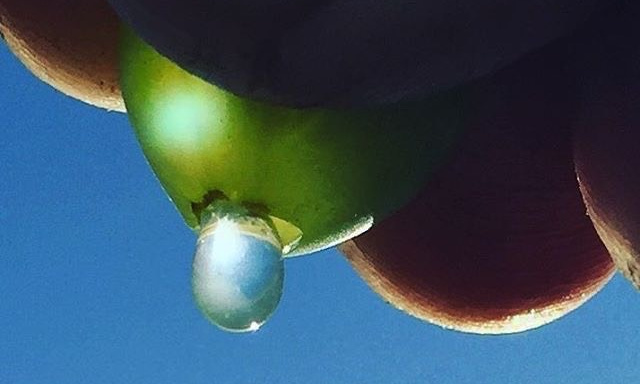Do we need new grape varieties?
By Jamie Goode | 25th May 2023
When does a plant stop being the same plant, and becomes another plant? This sounds like a daft question, but in the philosophy of science, botany has had a lot of trouble defining an ‘individual’ when it comes to plants. And this applies to grapevines. It might seem obvious what a single vine is, but if all the vines in a vineyard are the same variety, then on one level they are actually the same plant.

The remarkable thing about grape vines is that each vine of the same variety all came from one seed. For example, all the Pinot Noir vines in the world are derived from just one incident of vine sex, and a seed from this crossing that was planted and gave rise to this most noble of grape varieties a very long time ago. In fact, the story is made more intriguing by that fact that Pinot Noir is technically the same variety as Pinots Blanc, Gris and Meunier. Blanc and Gris are colour mutations of Pinot Noir and Meunier is a chimeric mutation with one of its cell layers altered. So they are more correctly referred to as clones rather than separate varieties, and all of these came from that original seed. The point is, all these vines grown worldwide are technically the same plant, according to one way of thinking. The original plant was reproduced by taking cuttings, and this has carried on over perhaps a thousand years.
I encountered this in my own experience. A couple of decades ago I grew grapevines on an allotment as a hobby. Through a friend of a friend, I managed to get a cutting from the famous Great Vine at Hampton Court, which is officially the largest vine in the world. It’s Vitis vinifera Schiava Grossa (also known as Black Hamburg) and was planted by Lancelot 'Capability' Brown in 1768. Technically, the vine I grew was exactly the same vine that was growing in Hampton Court, even though it was growing five miles away from the parent plant.
It’s worth emphasizing here that each time a vine has sex a new variety is produced. Even the same seeds in a berry will each give rise to different varieties. If you cross Pinot Noir with itself, you don’t get Pinot Noir, but new varieties, because the vine doesn’t breed true. And taking Chenin Blanc as an example, its parents are Savagnin and Sauvignonasse, but if you crossed them again, you wouldn’t get Chenin Blanc.
This all creates problems when it comes to breeding new varieties, and the issue is that we almost always make our wine selection based on grape variety. We want a Chenin Blanc, a Chardonnay, a Sauvignon Blanc, a Cabernet Sauvignon, a Shiraz or a Pinotage. Because of this, breeding efforts are thwarted by market acceptance. There’s a growing awareness that reliance on just a few famous varieties is risky and probably not very smart. It means that any pests or diseases have a real advantage because their target is a static one: there is very little genetic diversity across a wine region. The reason that almost all organisms have sex, which is complicated and costly, is to create variation. This variation is needed to make life difficult for pest and disease organisms, and keep ahead in the evolutionary arms race of disease and resistance. And the fame of some varieties has led them to be planted in places where they aren’t best suited, with an attendant environmental cost in farming them. For example, if Merlot is planted in a Mediterranean climate, it needs a lot of water to keep it alive. The same applies to Sauvignon Blanc.
But one of the big problems of viticulture is that the species of vine that all the varieties we know and love comes from, Vitis vinifera, lacks resistance to two diseases that originated in the USA and then spread the world in the 19th century, downy and powdery mildew. This means that vineyards have to be sprayed. Downy mildew is a disease that’s associated with growing season rainfall, and so is much more of a problem in cooler regions. In California, for example, it doesn’t really exist. But powdery mildew is a problem everywhere grapes are grown, and doesn’t need damp conditions to thrive. Because of these diseases regular spraying of vines with chemicals is needed. Traditional chemicals such as elemental sulfur (useful against powdery mildew) and copper-containing mixes like Bordeaux mixture (effective against downy mildew) are the ones permitted by organics. But newer fungicides exist that are used in conventional and sustainable viticulture. It’s not just the need for regular spraying that’s a problem; it’s also the carbon footprint of all the tractor passes, and then the compaction of the soil that this traffic through the vineyard causes.
